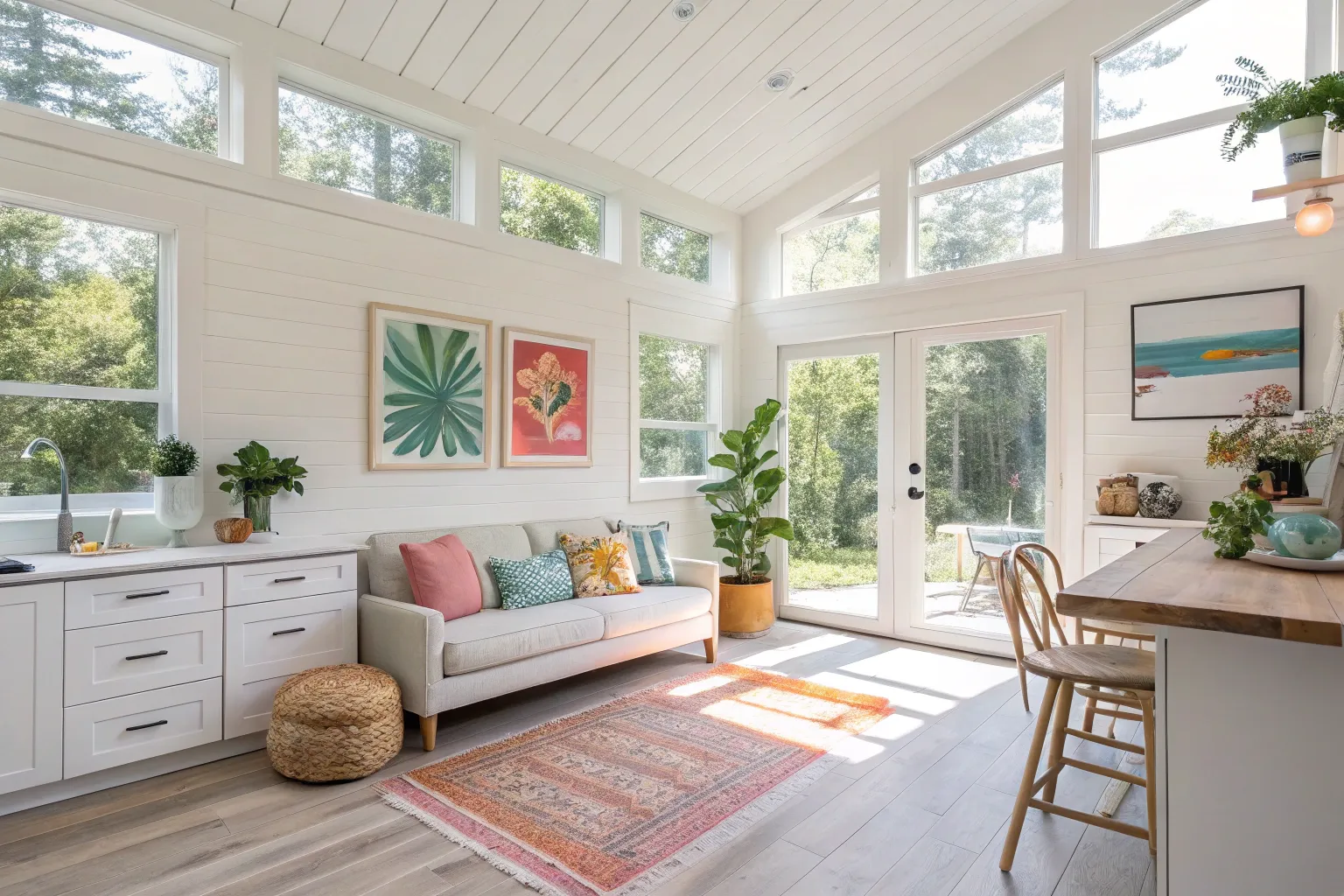Living in 400 square feet doesn’t mean sacrificing comfort or style. With thoughtful planning and strategic design choices, a compact space can feel expansive, functional, and deeply personal.
The Psychology of Small Space Living
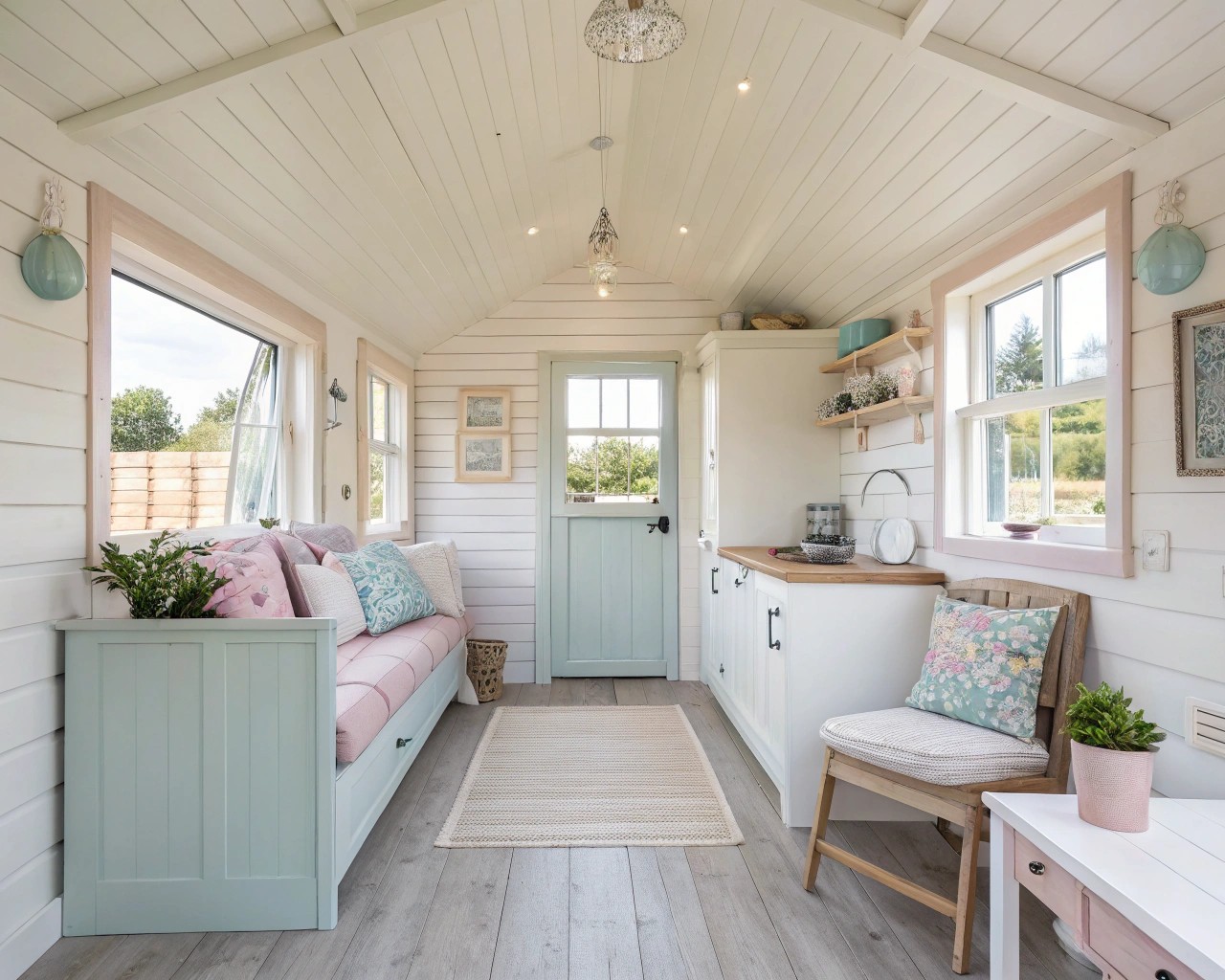
When designing compact spaces, I’ve observed that our perception of size is remarkably malleable. The right approach can transform a cramped studio into an airy sanctuary that feels twice its actual footprint. This transformation begins with understanding how we psychologically experience space.
Color as a Spatial Tool
Light colors serve as our first line of defense against spatial claustrophobia. Whites, soft grays, and pale neutrals reflect light rather than absorbing it, creating an immediate sense of openness. In my experience, monochromatic schemes work particularly well in small spaces—using varying shades of the same color family eliminates visual disruption while adding depth.
Cool tones like soft blues and pale greens have an additional psychological effect: they visually recede, making walls appear to push outward. This principle becomes invaluable when working with tight quarters.
Lighting That Expands Space
Strategic lighting can dramatically alter spatial perception. Layer different light sources throughout your space—ambient, task, and accent lighting work together to eliminate harsh shadows that make rooms feel smaller. Under-cabinet lighting in kitchens, for instance, creates the illusion of floating countertops while providing essential task illumination.
Mirrors become powerful allies when positioned opposite windows or light sources. They don’t just reflect light; they create the illusion of additional space by bouncing natural light throughout the room.
Mastering the Art of Zoning
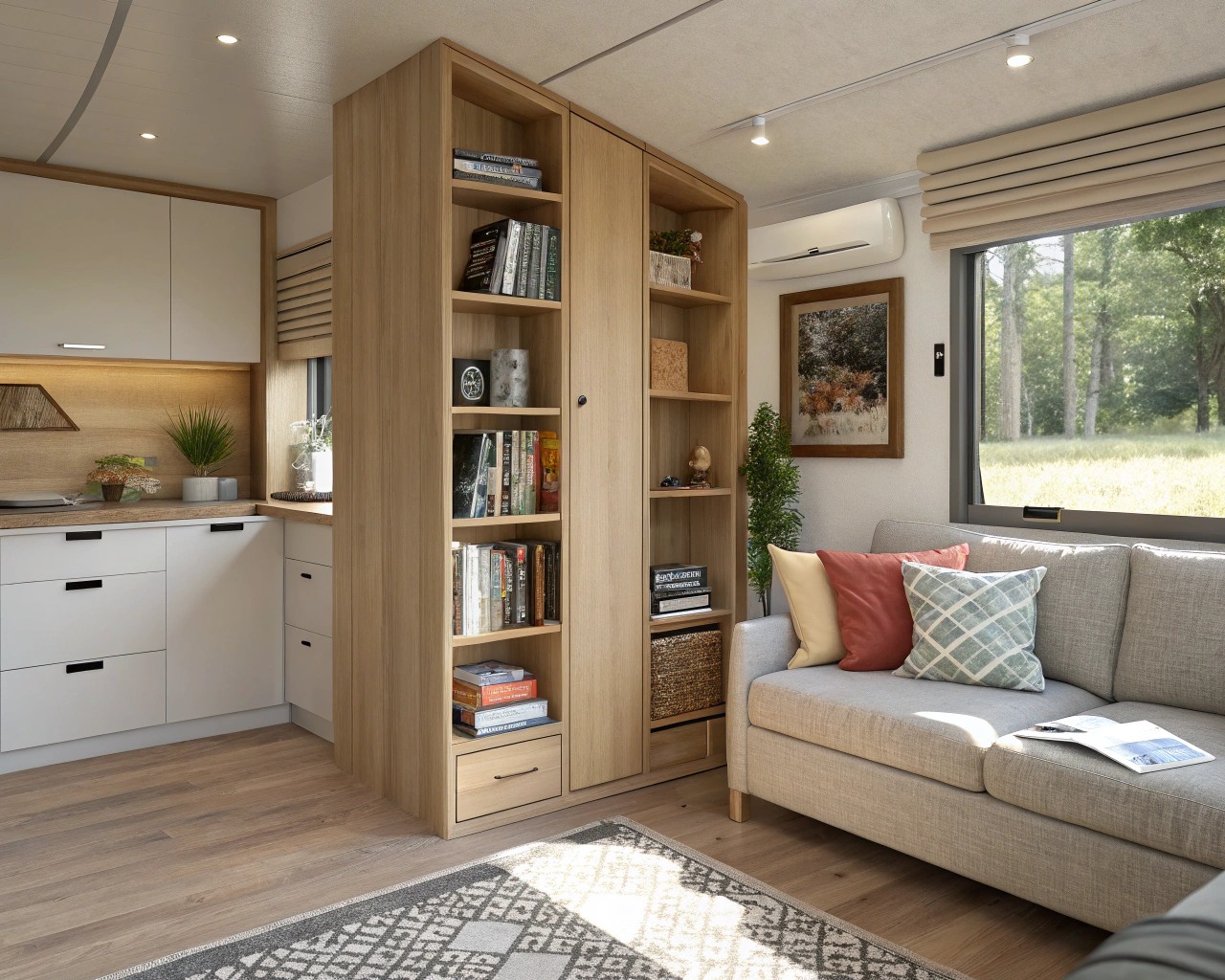
Creating distinct functional areas within 400 square feet requires finesse. The key lies in establishing clear boundaries without erecting physical barriers that fragment the space.
Visual Zoning Techniques
| Method | Application | Effectiveness |
|---|---|---|
| Color differentiation | Paint accent walls in different shades | Creates subtle boundaries without walls |
| Flooring transitions | Use rugs or different materials | Defines areas while maintaining flow |
| Ceiling treatments | Vary height or color | Adds architectural interest |
| Furniture placement | Position pieces to create natural barriers | Most flexible and cost-effective |
I’ve found that furniture arrangement offers the most versatility for zoning. A strategically placed bookshelf can separate sleeping and living areas while providing storage. Low-profile pieces like benches or storage ottomans create boundaries without blocking sight lines.
The Power of Elevation
Multi-level design adds visual interest and functional separation. Raised platforms can define sleeping areas while providing storage underneath. Even a simple step up to a dining area creates the psychological sense of entering a different room.
Storage Solutions That Work Double Duty
In compact living, every piece must earn its place through multiple functions. The most successful small-space solutions combine storage with other essential functions.
Multi-Functional Furniture Essentials
- Storage ottomans serve as seating, coffee tables, and concealed storage for linens or seasonal items
- Bed frames with built-in drawers eliminate the need for separate dressers while maximizing under-bed space
- Expandable dining tables accommodate daily needs while extending for entertaining
- Sofa beds transition from daytime seating to nighttime sleeping without requiring dedicated floor space
Vertical Storage Strategies
Wall-mounted solutions free precious floor space while drawing the eye upward, creating the illusion of height. Floor-to-ceiling shelving units make rooms feel taller while providing extensive storage. The key is selecting pieces with narrow profiles that don’t overwhelm the space.
Hidden storage proves particularly valuable in small spaces. Under-stair storage, hollow ottomans, and beds with lift-up platforms maximize every cubic inch.
Kitchen Design for Compact Living
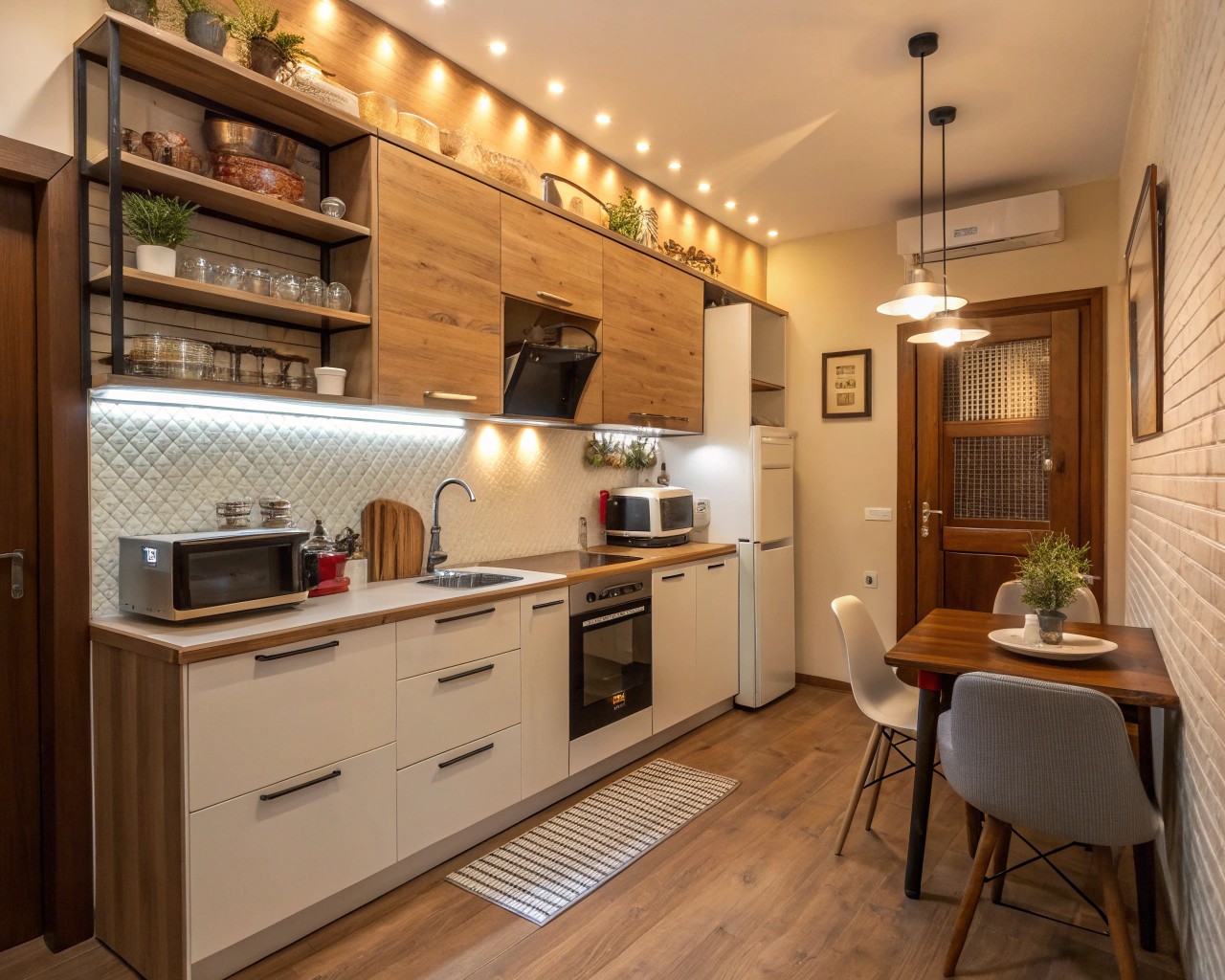
The kitchen often presents the greatest challenge in small-space design. Success depends on maximizing every inch while maintaining functionality.
Efficient Layout Principles
The galley kitchen excels in narrow spaces, placing everything within easy reach along parallel walls. In square footage as limited as 400 square feet, consider a single-wall layout that incorporates the kitchen into the main living area.
Space-Saving Features
- Pull-out cutting boards extend counter space when needed, then slide away
- Magnetic knife strips keep tools accessible without consuming counter space
- Stackable storage containers maximize cabinet efficiency
- Under-cabinet lighting illuminates work surfaces while creating spatial depth
Appliance selection matters tremendously. Compact, counter-depth refrigerators and combination microwave-convection ovens provide full functionality without overwhelming the space.
Creating Flow and Movement
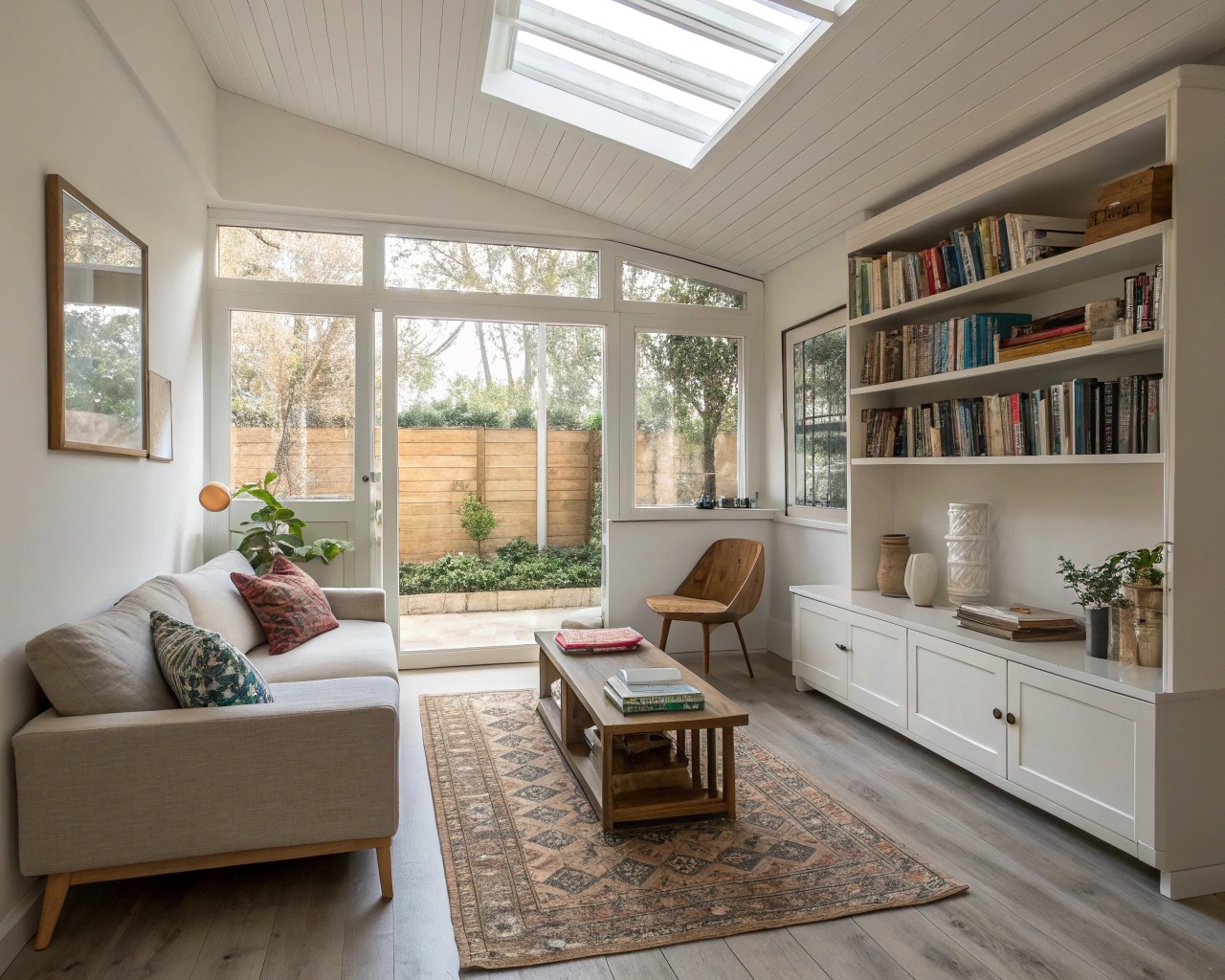
Spatial flow determines how comfortable a space feels to inhabit. Poor circulation creates bottlenecks and frustration; good flow makes even tight spaces feel gracious.
Traffic Pattern Optimization
I design circulation paths that allow movement between zones without obstruction. This means keeping walkways clear and positioning furniture to guide rather than impede movement. The goal is creating a logical progression through the space that feels natural and unforced.
Sight Lines and Visual Continuity
Maintaining visual connections between different areas prevents the space from feeling fragmented. Open shelving units, glass partitions, or strategically placed mirrors can provide separation while preserving sight lines.
The Japanese Approach to Small-Space Living
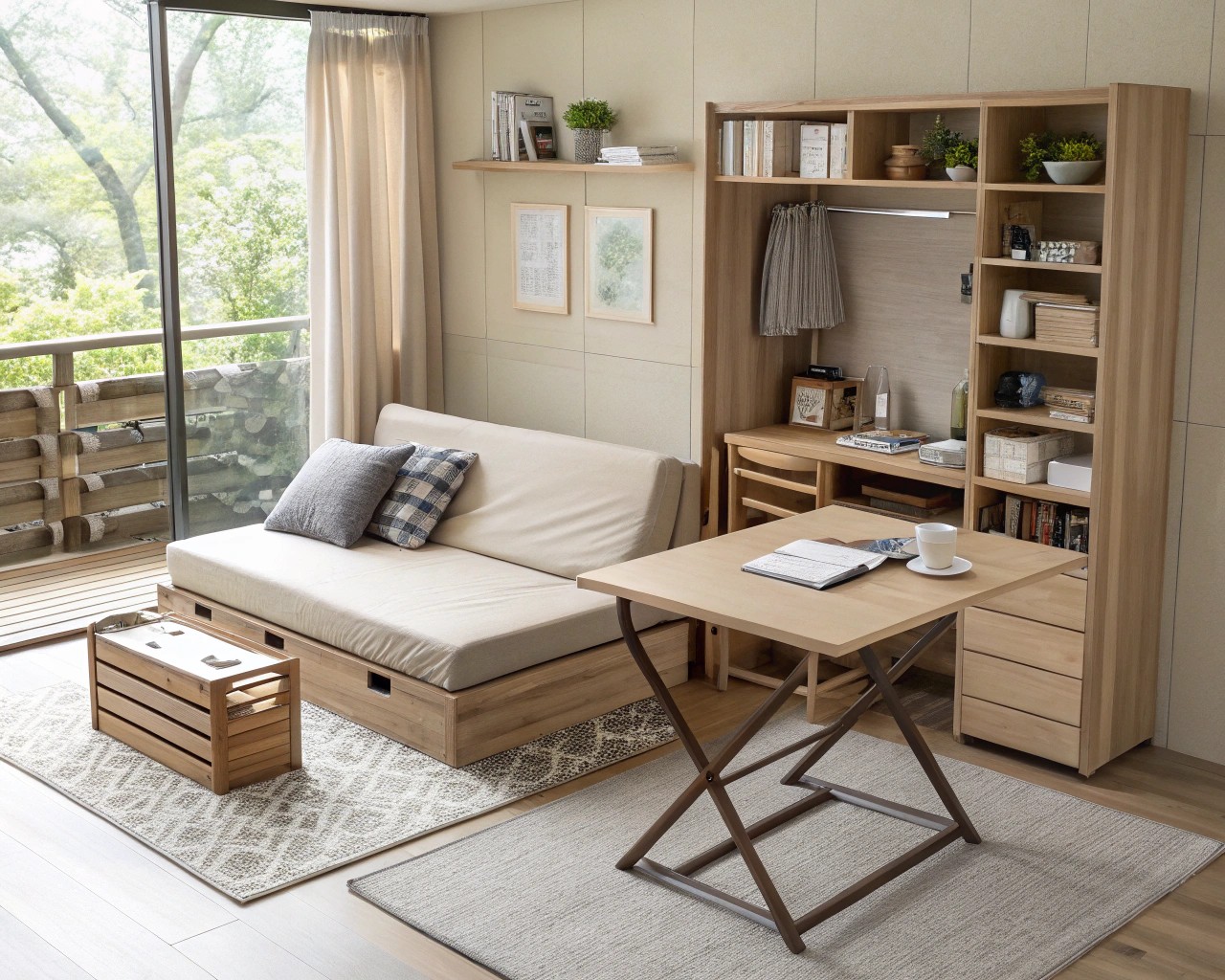
Japanese design philosophy offers valuable insights for compact living. The concept of “ma”—the conscious use of negative space—teaches us that empty areas are as important as filled ones.
Key Principles
- Multifunctional furniture that serves multiple purposes without visual clutter
- Hidden storage systems that maintain clean lines while providing necessary organization
- Natural materials that create warmth without overwhelming the space
- Vertical emphasis that draws attention upward, making ceilings feel higher
Practical Implementation Steps
Phase 1: Planning and Assessment
– Measure your space and create a scale drawing
– Identify necessary functional zones (sleeping, eating, working, storage)
– Assess natural light sources and traffic patterns
– Determine your lifestyle priorities
Phase 2: Color and Lighting Strategy
– Choose a light, cohesive color palette
– Plan layered lighting approach
– Position mirrors to maximize natural light
– Select window treatments that preserve light while providing privacy
Phase 3: Furniture Selection and Placement
– Prioritize multi-functional pieces
– Choose furniture with legs to maintain visual flow
– Create zoning through strategic placement
– Ensure adequate circulation space
Phase 4: Storage Integration
– Maximize vertical wall space
– Incorporate hidden storage solutions
– Use furniture with built-in storage
– Organize belongings to minimize visual clutter
Making It Personal
While functionality drives small-space design, personality makes it home. I recommend the “one-statement-piece” rule: choose one bold element—whether it’s artwork, a colorful accent wall, or a unique piece of furniture—that expresses your style without overwhelming the space.
Plants add life and improve air quality while connecting you to nature. Choose varieties that thrive in your light conditions and use hanging planters to save floor space.
Living successfully in 400 square feet requires both strategic thinking and creative problem-solving. The constraints of small space living can actually spark innovation, leading to solutions that are both beautiful and brilliantly functional. When every square foot counts, thoughtful design becomes not just desirable but essential.
The result? A space that feels intentional, uncluttered, and surprisingly spacious—proof that in design, as in life, it’s not about the size of your space, but how thoughtfully you use it.

